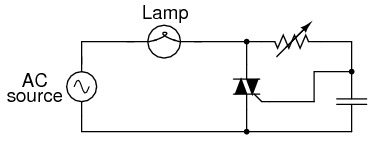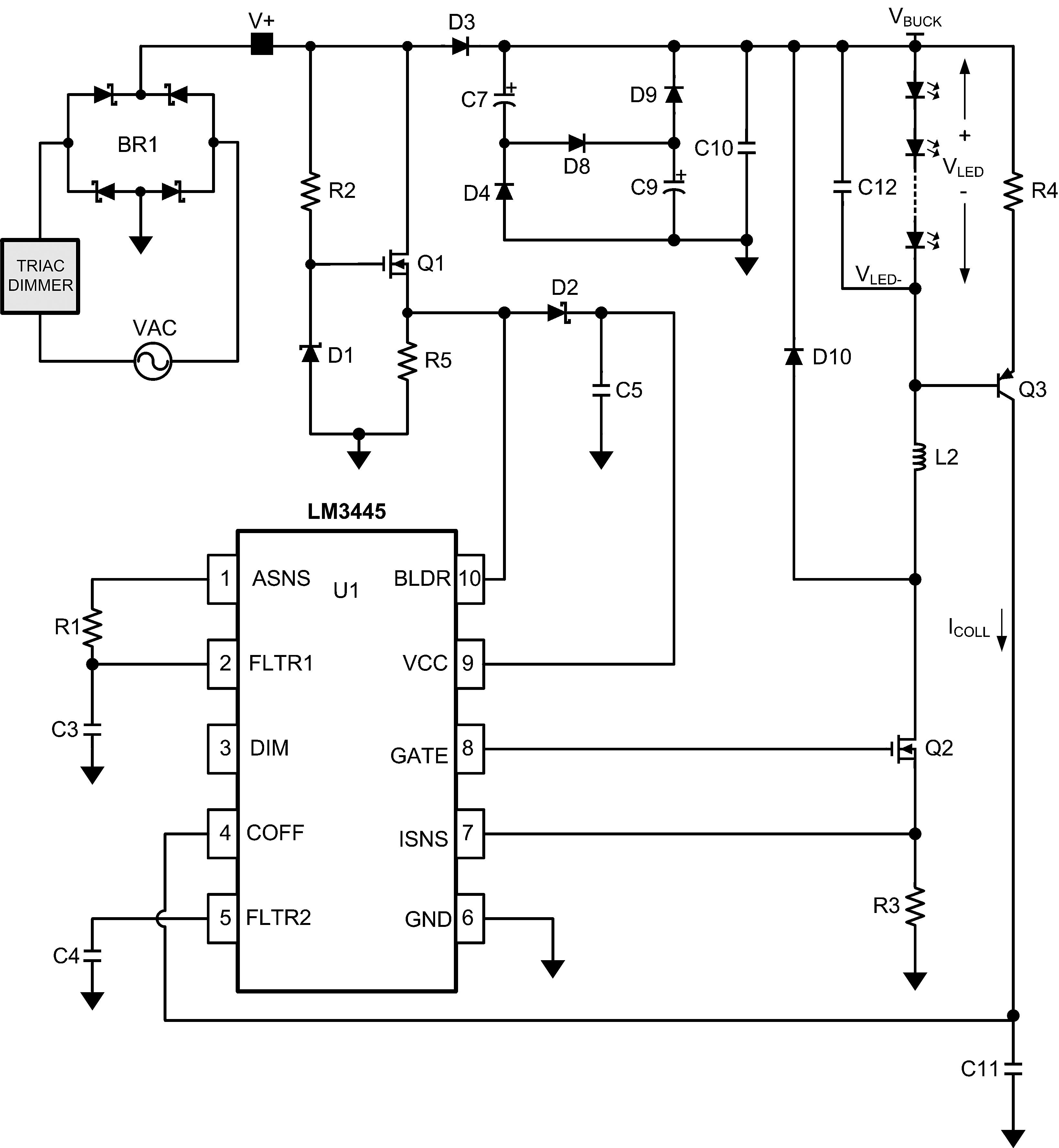
The TRIAC

SCRs are unidirectional current devices, making them suitable for controlling direct current (DC) only. When two SCRs are connected in a back-to-back parallel configuration, they can be utilized for specific applications.
SCRs, or Silicon Controlled Rectifiers, are semiconductor devices that act as electronic switches. They are primarily used in applications where control of high power is required. The unidirectional nature of SCRs means that they can conduct current in only one direction, which is advantageous for DC circuit applications.
When two SCRs are arranged in a back-to-back parallel configuration, they can effectively manage bidirectional current flow, allowing for the control of AC signals. In this setup, one SCR will conduct during the positive half-cycle of the AC waveform, while the other SCR conducts during the negative half-cycle. This arrangement is particularly useful in applications such as phase control, where varying the power delivered to a load is necessary.
The gate terminal of each SCR is critical for triggering the device. By applying a small voltage to the gate, the SCR can be turned on, allowing current to flow from the anode to the cathode. Once triggered, the SCR remains in the conducting state until the current flowing through it drops below a certain threshold, known as the holding current.
In practical applications, SCRs are commonly found in motor speed controls, light dimmers, and power regulators. The ability to handle high voltage and current levels makes them suitable for industrial applications where reliable and efficient control of electrical power is essential.
Overall, the use of SCRs in electronic circuits provides significant advantages in terms of efficiency and control, particularly in systems that require the management of DC or AC power.SCRs are unidirectional (one-way) current devices, making them useful for controlling DC only. If two SCRs are joined in back-to-back parallel fashion .. 🔗 External reference
SCRs, or Silicon Controlled Rectifiers, are semiconductor devices that act as electronic switches. They are primarily used in applications where control of high power is required. The unidirectional nature of SCRs means that they can conduct current in only one direction, which is advantageous for DC circuit applications.
When two SCRs are arranged in a back-to-back parallel configuration, they can effectively manage bidirectional current flow, allowing for the control of AC signals. In this setup, one SCR will conduct during the positive half-cycle of the AC waveform, while the other SCR conducts during the negative half-cycle. This arrangement is particularly useful in applications such as phase control, where varying the power delivered to a load is necessary.
The gate terminal of each SCR is critical for triggering the device. By applying a small voltage to the gate, the SCR can be turned on, allowing current to flow from the anode to the cathode. Once triggered, the SCR remains in the conducting state until the current flowing through it drops below a certain threshold, known as the holding current.
In practical applications, SCRs are commonly found in motor speed controls, light dimmers, and power regulators. The ability to handle high voltage and current levels makes them suitable for industrial applications where reliable and efficient control of electrical power is essential.
Overall, the use of SCRs in electronic circuits provides significant advantages in terms of efficiency and control, particularly in systems that require the management of DC or AC power.SCRs are unidirectional (one-way) current devices, making them useful for controlling DC only. If two SCRs are joined in back-to-back parallel fashion .. 🔗 External reference





